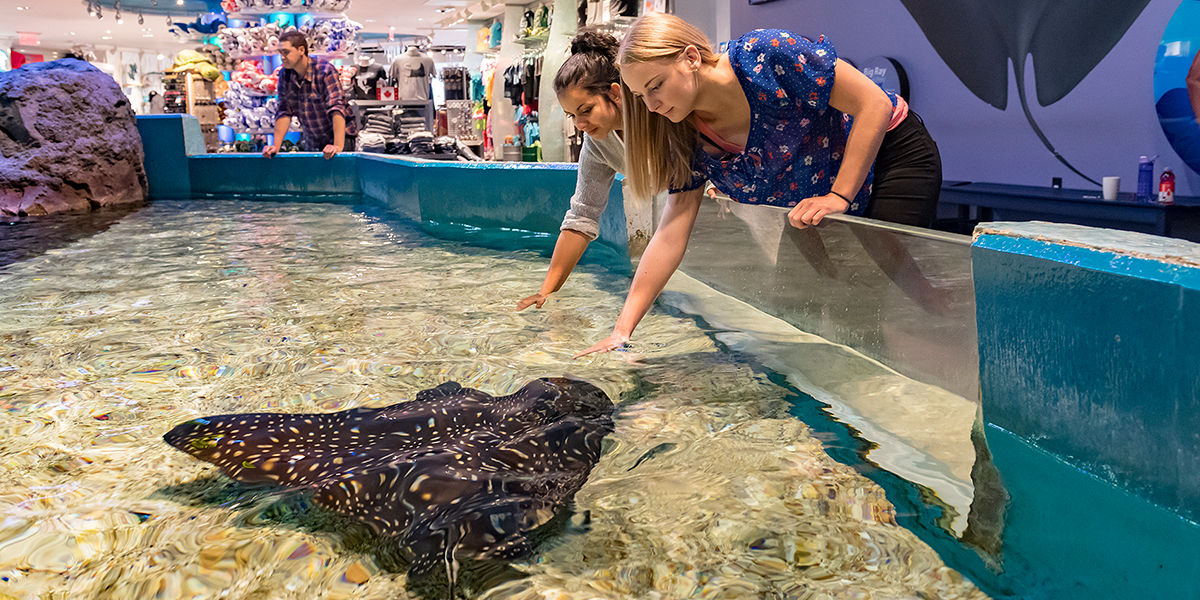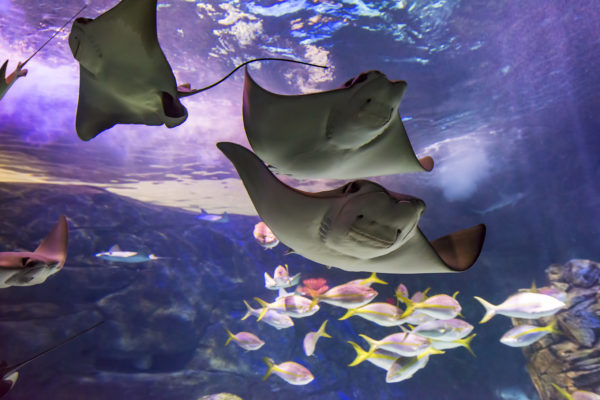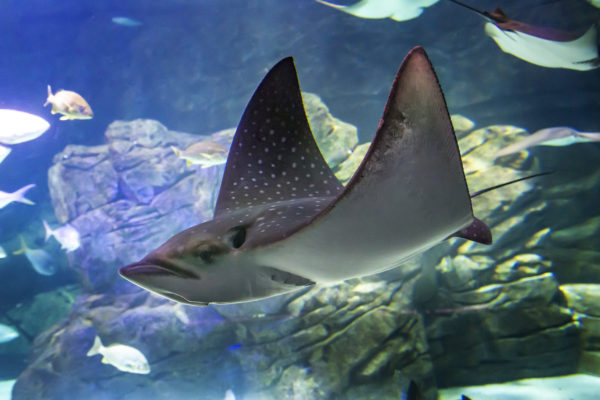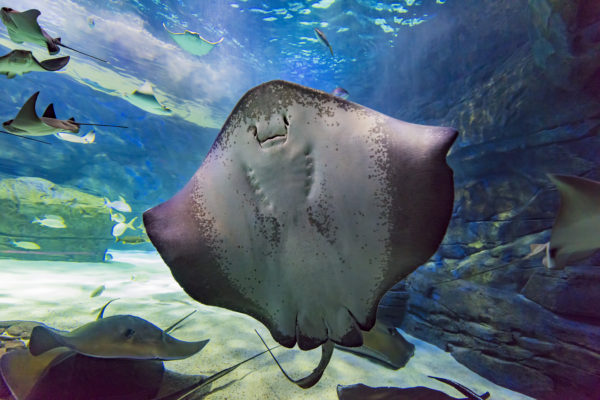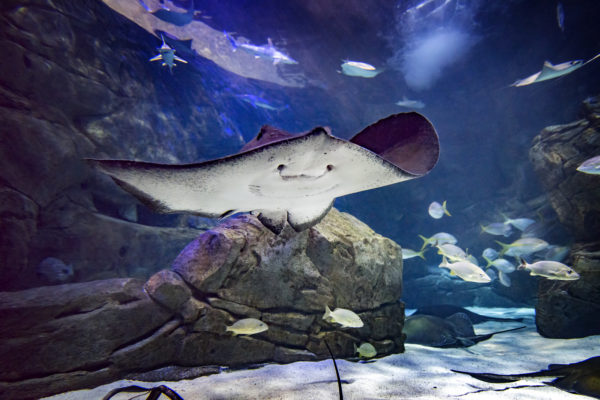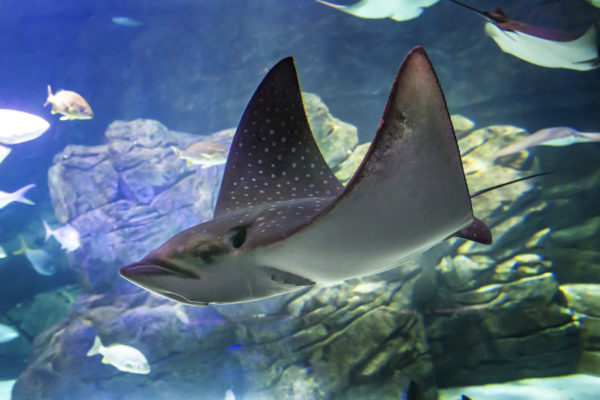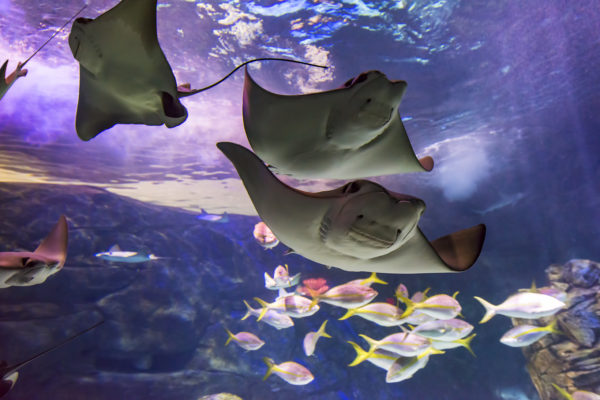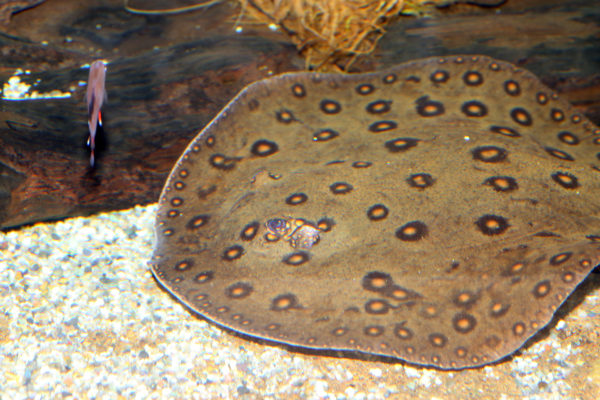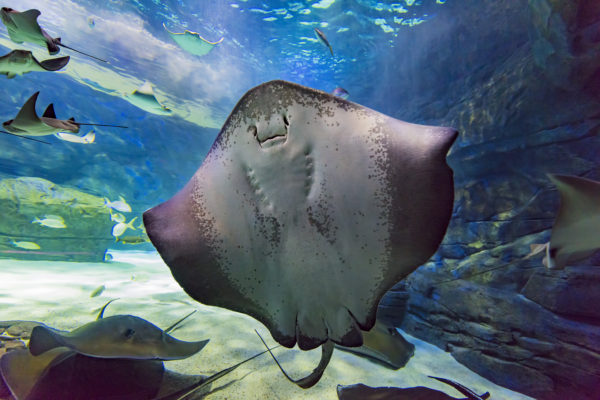Cownose Ray
Cownose rays form schools of as many as 10,000 to migrate. It is thought that they use water temperature and the orientation of the sun to help guide them. Using their frontal lobes (named after a cow’s nose), they sift through the ocean floor looking for tasty clams, snails, crabs and other invertebrates.

